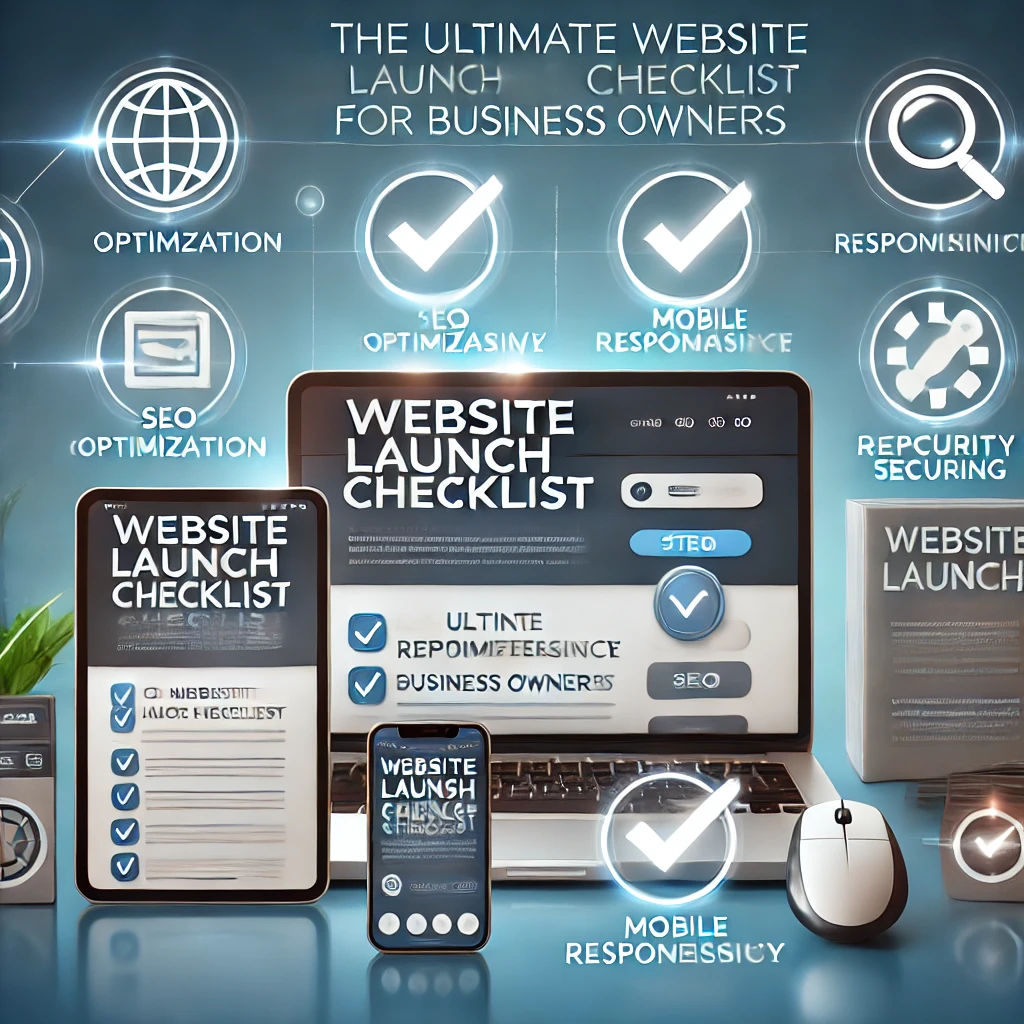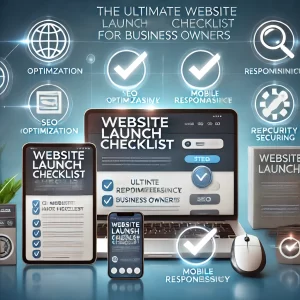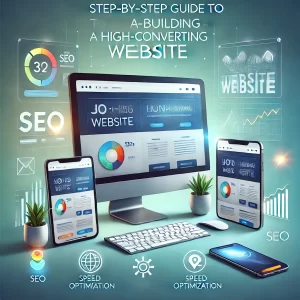
Launching a website is a milestone for any business, but to ensure it’s successful, you need to get everything right before going live. From technical settings to design tweaks and content updates, skipping essential steps can lead to missed opportunities, broken functionality, or poor first impressions.
To help you avoid those pitfalls, here’s the ultimate website launch checklist to guide you through every step of the process.
1. Define Your Goals and Target Audience
Before launching, it’s crucial to clarify your website’s purpose and identify who it’s for. This step ensures that every design and content decision aligns with your business goals and meets the needs of your audience.
Questions to Answer:
- What do you want users to do on your site (e.g., purchase, sign up, contact you)?
- Who is your target audience?
- How does your website solve their problems?
Pro Tip: Create a user persona to visualize your ideal customer and tailor your website accordingly.
2. Test Your Website’s Design and Functionality
Your website’s design and functionality directly impact user experience (UX). Conduct a thorough review to ensure everything looks and works perfectly.
Key Areas to Check:
- Responsive Design: Test your site on mobile, tablet, and desktop devices.
- Navigation: Ensure menus and links are intuitive and error-free.
- Images and Videos: Check for proper formatting and quick loading.
Pro Tip: Use tools like BrowserStack to test your website across multiple devices and browsers.
3. Optimize for Speed and Performance
A fast-loading website is critical for both user satisfaction and search engine rankings. Slow websites drive users away and negatively impact conversions.
Steps to Improve Performance:
- Compress images to reduce file sizes without sacrificing quality.
- Minify CSS, JavaScript, and HTML code.
- Use a Content Delivery Network (CDN) to serve content quickly.
- Choose a reliable hosting provider.
Pro Tip: Use tools like Google PageSpeed Insights or GTmetrix to identify and fix performance issues.
4. Ensure Your Content is Polished
Your website’s content is the backbone of your online presence. It should be clear, engaging, and free of errors.
Content Checklist:
- Proofread all text for typos, grammar, and consistency.
- Include compelling headlines and clear calls-to-action (CTAs).
- Optimize content with relevant keywords for SEO.
- Add alt text to all images for accessibility and SEO.
Pro Tip: Use Hemingway or Grammarly to refine your content’s readability and tone.
5. Set Up Analytics and Tracking
Analytics tools give you insights into how users interact with your site, enabling you to make data-driven improvements.
Essential Tools to Install:
- Google Analytics: Tracks traffic, user behavior, and conversions.
- Google Search Console: Monitors SEO performance and indexing issues.
- Heatmap Tools (e.g., Hotjar): Visualize user interactions on your site.
Pro Tip: Set up conversion tracking to measure key goals like form submissions or sales.
6. Optimize for Search Engines (SEO)
SEO ensures your website ranks high on search engines, driving organic traffic to your site.
SEO Checklist:
- Include keywords in your page titles, meta descriptions, and headings.
- Ensure URLs are short, descriptive, and keyword-rich.
- Add an XML sitemap and submit it to Google Search Console.
- Use schema markup to improve how search engines interpret your content.
Pro Tip: Use Yoast SEO or Rank Math plugins for WordPress to simplify on-page SEO.
7. Test Forms and Interactive Elements
Forms and interactive elements like chatbots or pop-ups are critical for user engagement and lead generation.
What to Test:
- Contact forms: Ensure they submit correctly and direct to the right email address.
- Newsletter sign-ups: Test the integration with your email marketing software.
- Payment gateways (if applicable): Verify secure and smooth transactions.
Pro Tip: Use form testing tools or conduct manual tests with different inputs to catch errors.
8. Set Up Security Features
A secure website builds trust with users and protects your data from cyber threats.
Security Measures to Implement:
- Install an SSL certificate to enable HTTPS.
- Use strong passwords for all accounts.
- Update all plugins, themes, and software to the latest versions.
- Set up daily backups to prevent data loss.
Pro Tip: Use website security tools like Sucuri or Cloudflare to monitor and protect your site.
9. Test Load Times and Scalability
Your website should be able to handle traffic spikes without crashing.
How to Test Scalability:
- Use load-testing tools like LoadImpact or Apache JMeter to simulate high traffic.
- Monitor server performance and response times.
Pro Tip: Choose scalable hosting solutions like cloud hosting or VPS to accommodate growth.
10. Conduct a Final Pre-Launch Review
Before going live, perform a final walkthrough of your website to ensure nothing is overlooked.
Pre-Launch Checklist:
- Test every link, button, and form.
- Verify all integrations (e.g., analytics, email marketing).
- Review design, layout, and branding for consistency.
- Confirm site compatibility with major browsers.
Pro Tip: Involve team members or beta testers to identify any last-minute issues.
11. Announce Your Launch!
Once your website is live, let your audience know!
Ways to Announce Your Launch:
- Post on social media with a link to your website.
- Send a newsletter to your email subscribers.
- Run a special promotion or event to celebrate.
Pro Tip: Use launch day as an opportunity to gather user feedback and make quick adjustments if needed.
How The Tech Plug Can Help
At The Tech Plug, we understand that launching a website can be overwhelming. That’s why we offer comprehensive services to ensure your site is polished, optimized, and ready for success.
What We Offer:
- Custom website design and development.
- SEO optimization and analytics setup.
- Ongoing support to keep your site running smoothly.
Ready to launch your website with confidence? Contact The Tech Plug today to get started!
FAQs
1. What is the most common mistake businesses make when launching a website?
The most common mistake is neglecting to test the site thoroughly, leading to broken links, poor performance, or functionality issues post-launch.
2. How long does it take to launch a website?
It depends on the complexity, but a standard website typically takes 4–8 weeks to design, develop, and test.
3. Can I launch a website without SEO?
While you can launch without SEO, optimizing your site before launch increases your chances of being discovered by search engines and users.
4. What tools do I need for website security?
Use SSL certificates, security plugins (like Sucuri or Wordfence), and secure hosting to protect your site.
5. How often should I update my website after launch?
Regularly! Update content, plugins, and features at least monthly to keep your site secure and relevant.





